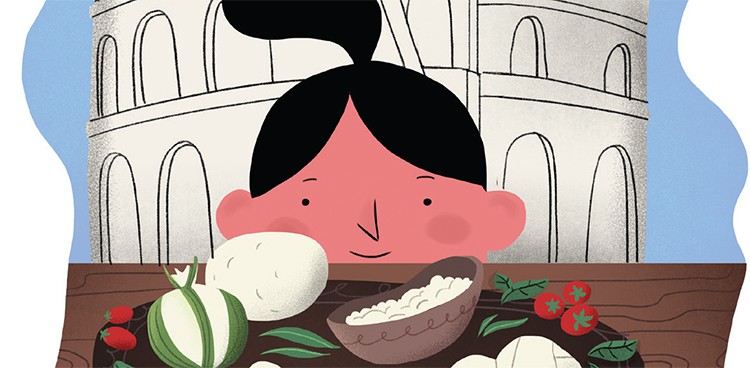
Everyone had a choice: Colosseum or mozzarella?
We were 10 people traveling through Italy. My husband, Jake, and I boarded the plane knowing just one couple, Sam and Colin. But after a week sharing a five-bedroom Tuscan villa—staying up late drinking Vin Santo and watching “Spaceballs” on VHS; getting lost in Chianti’s maze of unmarked roads—our group had stopped being polite and started getting real, to quote the opening credits of “The Real World.”
Over dinner in Rome we went over the itinerary for the next day—our last of the trip. I proposed one option: Sunday brunch at Obicà, the buzzy mozzarella bar that has since spawned an empire. The first-time visitors to Rome wanted to check out the Colosseum. Fair enough. I managed to convince Jake and three others to skip the engineering marvel and gorge on cheese instead.
As we approached the buffet table at Obicà, we knew we had made the right decision. There were platters piled high with plump, delicate mozzarella di bufala Campana DOP, stretchy stracciatella, smoked mozzarella, and small bocconcini; mozzarella with varying degrees of saltiness and creaminess sat alongside fresh and roasted tomatoes, basil, smoked eggplant, and—I imagine—other side dishes. Really, I only had eyes for the cheese.
Just as we asked for the check, a cook brought out a bowl of burrata. Filled with cream, burrata manages to do the unthinkable: improve on perfection. There was no degree of fullness or indigestion that would have prevented us from digging in. As my friend Marielle ate her first spoonful, her face contorted into an expression of incredulous anger. “I love this cheese so much I want to punch it,” she said.
I knew exactly what she meant—my lifelong obsession with the milky, stretchy stuff borders on violent.
I first ate fresh mozzarella in a Queens basement. My grandparents owned the whole house but seemingly never left the bottom floor, a.k.a. the kitchen, dining room, and walk-in pantry overflowing with pasta. My grandfather, Fernando, emigrated from Calabria and was a longshoreman and taxi driver who, after retiring, took a job at the local Key Food and brought home mozzarella nearly every day. My grandmother, Claudia, served it simply with olive oil and salt, flanked by crusty bread and leftover tomato sauce. At age five I’d easily gobble up two bowls, gobsmacked that anything could taste so good. (And lord help the cousin that stood between me and the cheese.)
It was no doubt mozzarella’s siren call that first drew me to my neighborhood, Carroll Gardens, Brooklyn, ground zero for old-school Italian joints like the excellent Caputo’s Fine Foods, where I buy salt-dunked orbs every Sunday. True confession: When pregnant with my first son, Henry, I would regularly polish off not only the entire softball of cheese but also the water it came in.
Thinking back to that gluttonous Rome day, it’s clear those of us who opted for cheese over the city’s most famous tourist site did so because mozzarella is pure pleasure. The Colosseum: impressive, beautiful, historical. Not so pleasurable. (Consider the human sacrifices.) But oh, mozzarella! While it may not be the world’s most interesting or multilayered cheese, it’s dairy distilled down to its cleanest, most perfect form. There’s an art to making something so simple taste so sublime.
Only on the plane ride home did my husband divulge that while he had been to Rome once before, he’d never visited the Colosseum.
Yet he decided to join the cheese party regardless. “How long has the Colosseum been there?” he explained with a shrug. “It’ll be here when we come back. But the mozzarella bar . . . who knows?” I married well.



